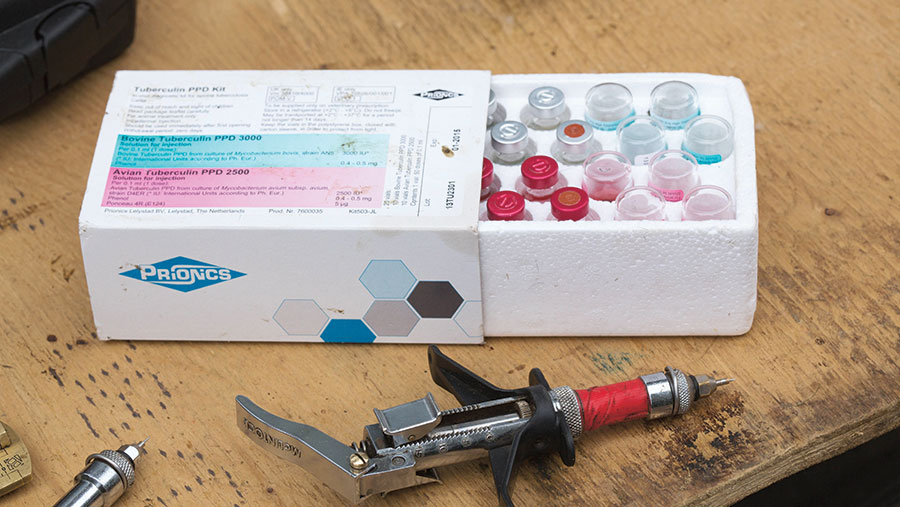Wider gamma testing needed to tackle bovine TB, says expert
 © Tim Scrivener
© Tim Scrivener The government’s roll-out of gamma interferon blood testing for certain bovine TB breakdown herds in the High Risk Areas (HRAs) of England is “too little, too late”, according to an independent consultant who has advised Defra on animal health matters.
Jan Bayley, who co-ordinates the Animal Welfare Group of vets and scientists, believes the limited extension of gamma testing into the HRAs means that the number of cattle still harbouring the disease undetected will persist.
See also: Scientists question cull strategy to tackle bovine TB
Until April this year, gamma interferon testing – which is more sensitive than the standard skin test – was mainly limited to breakdown herds in the Edge Area (EA) and Low Risk Area (LRA).
Its use on all breakdown herds in these areas is intended to ensure that they are truly clear of infection before movement restrictions are lifted and Officially TB-Free status is restored. With skin testing alone, a fifth of breakdown herds could retain at least one infected animal, leading to renewed outbreaks.
Extended use
Following an industry consultation last year, Defra decided to extend the use of gamma interferon testing to breakdown herds in the HRAs as well.
But, for now at least, such additional testing is only being prioritised in herds located in areas where there have been at least two years of badger culling.
Defra justifies this approach by pointing out that a “substantial proportion” of new TB breakdowns in the HRA occur in these areas due to contact between badgers and cattle. “That is why we have not adopted a blanket approach to gamma testing across the HRA,” it said.
The aim is to achieve disease-free pockets by reducing TB in both cattle and badgers as part of the 25-year strategy to eliminate the disease.
The NFU believes the policy is proportionate and it is important to use all the tools available, including the gamma interferon test, “where it is likely to have the greatest impact in removing infected cattle and reducing the risk of repeat TB breakdowns”.
Tiny proportion
But according to Ms Bayley, the Defra approach means that just a tiny proportion of herds in the HRA – where over 90% of TB breakdowns occur – will receive a supplementary test.
She believes that, at the very most, 80 breakdown herds in the cull areas of Somerset, Gloucestershire and Dorset might receive gamma tests this year.
“Given that there were 2,306 confirmed breakdowns in the HRA in 2016, that would only amount to 3.5%, which would still leave the vast majority of herds in the HRA not being supplementary tested with gamma interferon.”
Ms Bayley also points to the benefit of using the gamma interferon more widely in Wales: “This has greatly helped in reducing new herd incidents in Wales from 1,198 in 2008 to 711 in 20016. In contrast, TB levels are not falling in England.
“Until Defra is prepared to significantly increase gamma testing in the HRA to approach the intensity to that being applied in the EA, the LRA and Wales, it is difficult to see how bovine TB will ever be controlled.”
Defra comment
Defra insists that it has “one of one of the most rigorous surveillance programmes for bTB in cattle in the world”, which combined with movement controls, biosecurity on farms, badger culling and vaccination should get on top of the disease.
“It is also worth noting that badger control operations are now licensed on 21% of land in the HRA and each year we expect to see an increase in the deployment of gamma testing,” said a spokesman.
